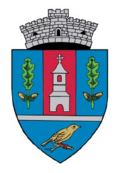Alma (Sibiu)
|
Alma Almaschken Küküllőalmás |
||||
|
||||
| Basic data | ||||
|---|---|---|---|---|
| State : |
|
|||
| Historical region : | Transylvania | |||
| Circle : | Sibiu | |||
| Coordinates : | 46 ° 13 ' N , 24 ° 28' E | |||
| Time zone : | EET ( UTC +2) | |||
| Height : | 325 m | |||
| Area : | 36.29 km² | |||
| Residents : | 1,886 (October 20, 2011) | |||
| Population density : | 52 inhabitants per km² | |||
| Postal code : | 557021 | |||
| Telephone code : | (+40) 02 69 | |||
| License plate : | SB | |||
| Structure and administration (as of 2016) | ||||
| Community type : | local community | |||
| Structure : | Alma, Giacăș , Șmig | |||
| Mayor : | Marius-Alin Călin ( PNL ) | |||
| Postal address : | Mihai Eminescu Street, no. 226 loc. Alma, jud. Sibiu, RO-557021 |
|||
| Website : | ||||
Alma ( German Almaschken , Hungarian Küküllőalmás ) is a municipality in the Sibiu district in Transylvania , Romania .
The place is also known by the Romanian outdated names Alma Mică Săsească , Alma Dumbrăveni and the Hungarian Szászalmás , Almás and Szászkisalmás .
Geographical location
In the Transylvanian Basin ( Podișul Transilvaniei ) in the north of the Sibiu County, the municipality is located on the right side of the Great Kokel in the historic Klein-Kokelburg County ( Comitatul Târnava-Mică ). The place is on the right bank of the Great Kokel - on the county road ( Drum județean ) DJ 142E - about one kilometer from the national road ( Drum național ) DN 14 ( Sibiu - Sighișoara ) and from the Ațel ( Hetzeldorf ) train station on the Teiuș– railway line. Brasov away. Almaschken is located 12 kilometers from the city of Mediaş ( Mediasch ) and about 22 kilometers from Sighişoara ( Schäßburg ); the district town of Sibiu is about 70 kilometers southwest of Almaschken.
history
The place was first mentioned in 1317. Settlement of the region goes back to the Copper Age - according to finds on the area of the incorporated village of Schmiegen (Rum. Rummig) . According to G. Téglás , G. Nagy , M. Roska and D. Popescu, a double-edged brass hatchet was found here, which is now in the museum in Târgu Mureș ( Neumarkt am Mieresch ). In addition, gold finds in a clay vessel and various pieces of jewelry were made on the Corbu (ung. Korbuj ) area near the village.
The municipality Almaschken became a municipality on February 24, 2004 when Hetzeldorf was detached, to which the villages Jakobsdorf (Giacăș) and Schmiegen (Șmig) belong.
The main occupations of the population today are agriculture and livestock .
population
In 1850 there were 1,908 inhabitants in the area of today's municipality. 1,273 of them were Romanians , 344 Hungarians , 137 Germans , 135 Roma and 19 others. In 1977 the largest population was recorded with 2,606 - and at the same time that of the Romanians (1,890) and that of the Hungarians (632). The highest number of Germans (137) and that of Roma (135) were registered in 1850. In addition, two residents referred to themselves as Slovaks in 1930 . At the 2002 census, 2,100 people lived in the area of today's municipality, of which 1,518 were Romanians, 507 Hungarians, 62 Roma and 13 Germans.
Sons and daughters of the church
- Stefan Binder (1907–1997), Romanian-German Germanist and promoter of Banat dialect research
Attractions
- The reformed church , built in the 15th century and rebuilt several times (the tower was built in 1902 or 1910 according to different statements), is a listed building.
- The old school, built in the 19th century, is a listed building.
- In the incorporated village of Șmig, the Protestant church , built in the second half of the 15th century, rebuilt in the 18th century and 1859, is a listed building. The altar, erected in 1586, can now be seen in a Bucharest museum.
- The Reformed Church in the incorporated village of reformmig, donated by the Horváth Márton family in 1866 .
Web links
Individual evidence
- ↑ 2011 census in Romania at citypopulation.de
- ^ Dictionary of the localities in Transylvania
- ↑ Heinz Heltmann, Gustav Servatius (Ed.): Travel Guide Siebenbürgen. Kraft-Verlag, Würzburg, 1993, ISBN 3-8083-2019-2 .
- ^ Institute Of Archeology - Șmig, accessed May 11, 2011
- ↑ Information on the establishment of the Almaschken community on March 8, 2004, accessed on January 15, 2016 at lege5.ro (Romanian)
- ↑ Census, last updated November 4, 2008, p. 18 (Hungarian; PDF; 596 kB)
- ↑ a b c List of historical monuments of the Romanian Ministry of Culture, updated 2010, accessed on May 11, 2011 PDF 7.10 MB
- ↑ Pictures and description of the church in Alma on welcometoromania.ro
- ↑ a b Pictures and description of the village Șmig, on welcometoromania.ro



